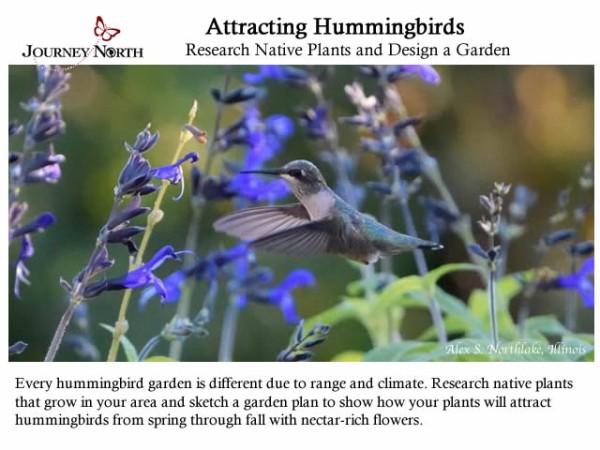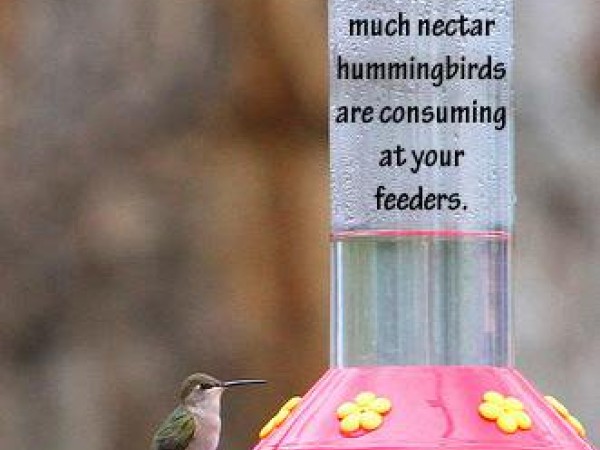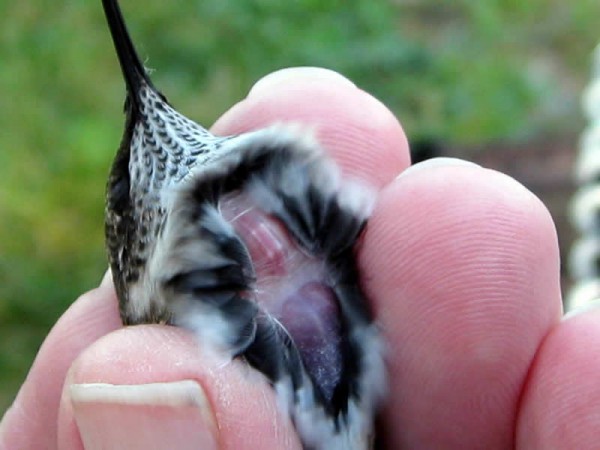Tiny Birds, Big Eaters
Stop and Go
Hummingbird migration is a stop and go journey. As hummers travel south, they must find places to rest and refuel along the way. Is your yard a valuable stopover site for hungry hummers?
Doubling Their Weight
Hummingbirds may be tiny, but they are big eaters. No animal on earth has a faster metabolism. These birds burn food so fast they often eat 1.5 to 3 times their body weight in food per day.
Before migrating, hummingbirds go on a feeding frenzy. They feed often and intensely for days, a state called hyperphagia. Ornithologists calculated that hyperphagia generates enough fuel to fly nearly 600 miles at 35 miles per hour. Hummingbirds start feeding as early as forty-five minutes before sunrise and keep eating until dusk. To gather enough nectar to meet their high energy needs, hummingbirds must visit hundreds of flowers every day. One hummingbird can visit as many as two hundred flowers in fifteen minutes!
Habitat is critical all along the migration trail. Your gardens help hungry hummingbirds during fall migration. Spotted Jewelweed is an important wildflower for hummingbirds because it blooms during fall migration. The tubular shape of its drooping blossoms make hummers the perfect pollinators as they go from bloom to bloom in search of nectar. Other hummingbird favorites include: Beebalm, Coral honeysuckle, Cardinal flower, Foxglove and Sage.
Protein Diet
In addition to nectar, hummers need protein. They eat most any soft-bodied bugs they can swallow whole: fruit flies, gnats, aphids, and tiny spiders, plus their eggs and larvae. If you have an insecticide-free lawn and garden, you’ll be helping hummers find bugs for protein.
Feeder Action
Your gardens and feeders help hummingbirds gain sufficient fuel for their journey south. As the fall season progresses, the behavior and number of hummers visiting your feeders will change dramatically. Measure the volume of food the hummers consume and tell us what you discover.
Fueling Up: Keith DeClercq
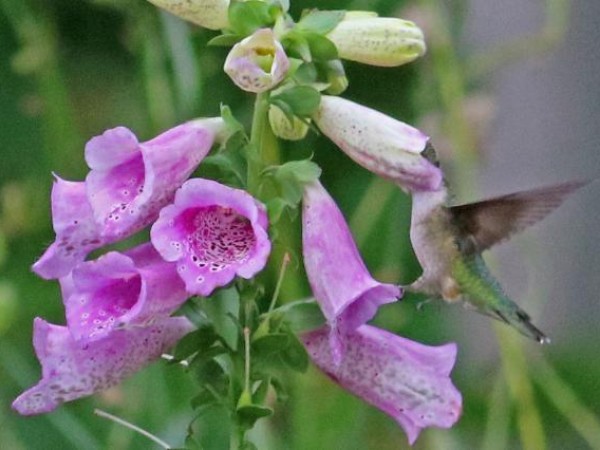
Fueling Up: Kate Parker
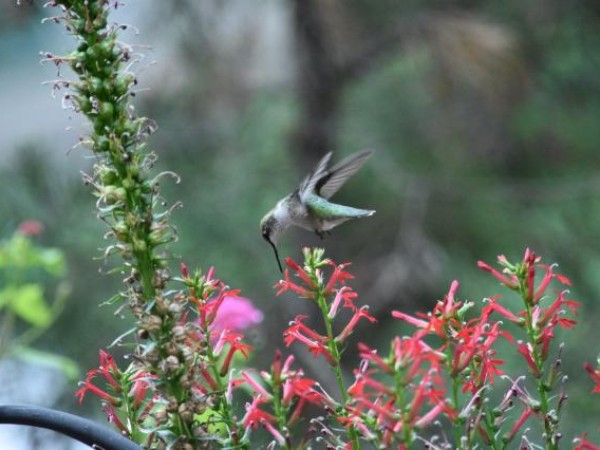
Stopover Sites: Spotted Jewelweed
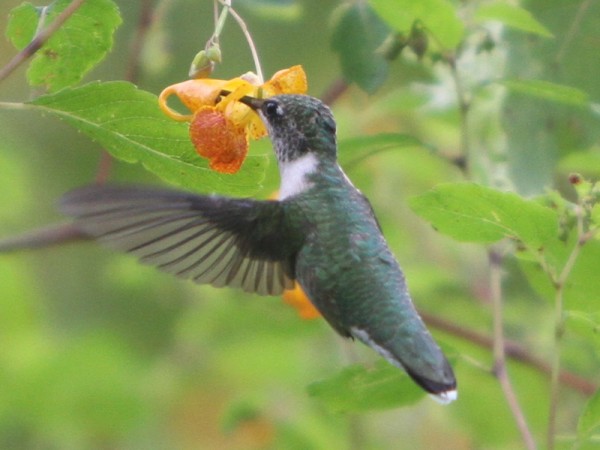
Stopover Sites: Pineapple Sage
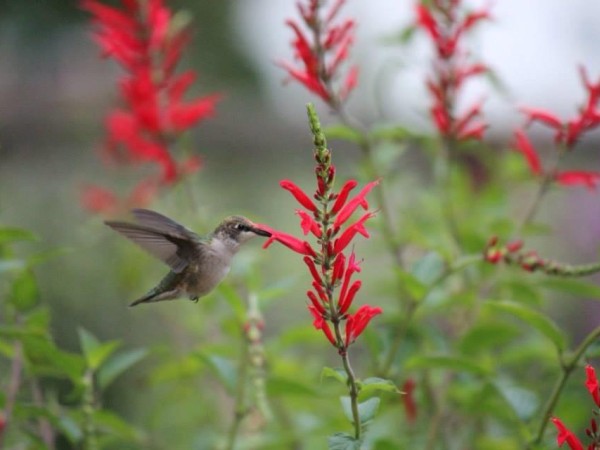
Stopover Sites: Monarda

